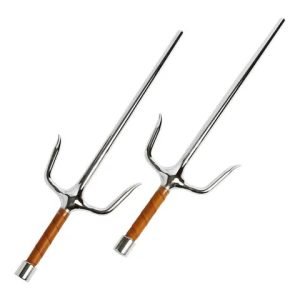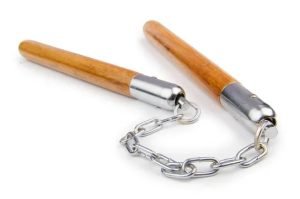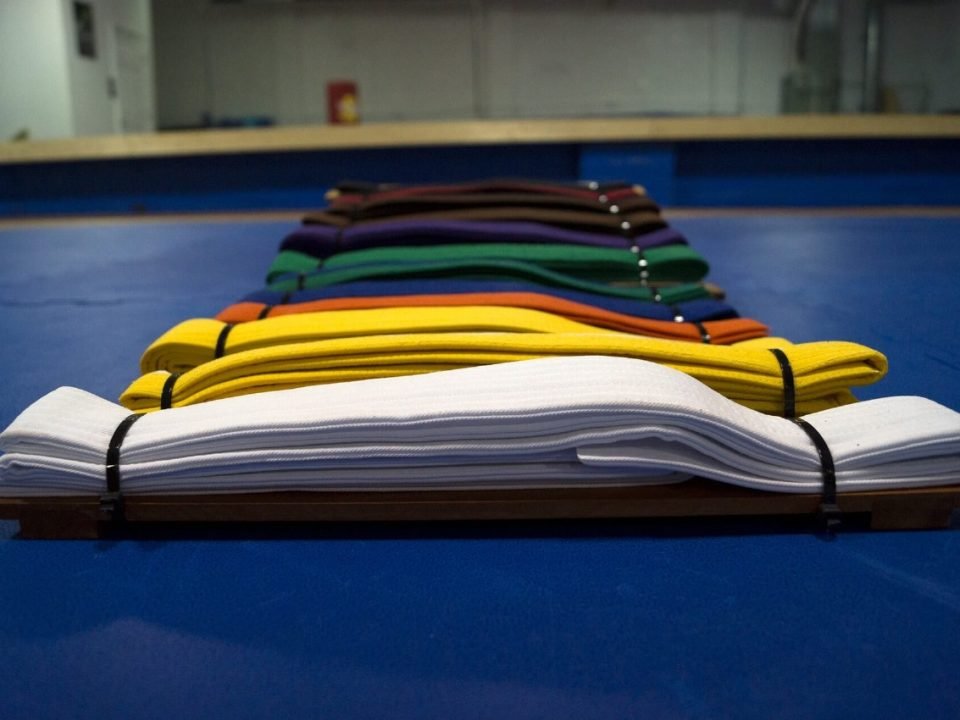
KARATE BELT COLOURS MEANING & RANKING SYSTEM
24/10/2023Kobudo weapon training is a traditional Okinawan martial art that focuses on the use of various weapons. It is often practiced alongside Okinawan Karate. Kobudo is not just about combat; it also promotes discipline, focus, and a deep connection to Okinawan heritage. It’s a martial art that offers a unique blend of physical training and cultural appreciation.
Kobudo weapon training specification
Weapon Variety: Kobudo includes the study of various weapons, such as the bo (staff), sai (metal truncheons), tonfa (wooden batons), nunchaku (flail-like weapons), kama (sickles), and more. Each weapon has its own unique techniques and applications.
Techniques and Kata: Training involves learning specific techniques and kata (pre-arranged forms) for each weapon. These kata are a series of movements and attacks that help practitioners understand the weapon’s capabilities and how to use it effectively.
Weapon Handling: Kobudo training emphasizes proper grip, stances, and posture when using the weapons. Students learn to wield these traditional tools with precision and control.
Defense and Offense: Kobudo techniques cover both defensive and offensive maneuvers. Students learn to block, parry, strike, and disarm opponents using the weapons.
Practical Applications: In addition to kata, Kobudo practitioners also study the practical applications of the techniques. This involves understanding how to use the weapon in real-life self-defense scenarios.
History and Philosophy: Kobudo often incorporates the historical and philosophical aspects of the weapons, including their origins and the cultural significance of their use.
Safety and Control: Due to the potentially dangerous nature of these weapons, safety and control are paramount. Teachers instruct students to handle the weapons responsibly and to show respect for their training partners.
Sparring and Drills: Advanced practitioners may engage in sparring and drills using Kobudo weapons. This helps them refine their skills and test their abilities in controlled settings.
Kobudo weapon training types
- SAI

Sai are versatile weapons used for both offense and defense. Additionally, the central blade can deliver stabbing and slashing attacks, while the side prongs effectively block, trap, and disarm an opponent’s weapon. Practitioners of SAI develop specific techniques, including strikes, blocks, and disarms. The weapon’s applications are understood by students through pre-arranged forms called kata.
2. BO

The bo is not only a martial arts weapon but also a symbol of discipline and respect, and its use reflects the deep-rooted traditions of Okinawan martial arts. The bo can be used both defensively, for blocking and disarming, and offensively, for striking and incapacitating
3. TONFA

Tonfa techniques involve various strikes, blocks, and defensive maneuvers. Proper training and practice are essential for effectively and safely using the tonfa.Similar to other martial arts weapons, the tonfa steeped in tradition requires dedication and discipline to master. Many practitioners often employ it as a training tool to enhance martial arts skills and physical fitness.
4. NUNCHAKU

Nunchaku techniques involve various moves, including strikes, blocks, twirls, and spins. Skilled practitioners can perform intricate and dynamic routines with nunchaku.
The nunchaku is often used as a training tool to improve martial arts skills and to develop forearm and wrist strength. A versatile weapon, the nunchaku is capable of both defensive and offensive techniques, including striking, blocking, trapping, and disarming opponents.
5. KAMA

Kama techniques require proper training and practice to ensure safe and effective use. The kama is a weapon with a rich history in martial arts and kobudo and remains an essential part of traditional martial arts training.




